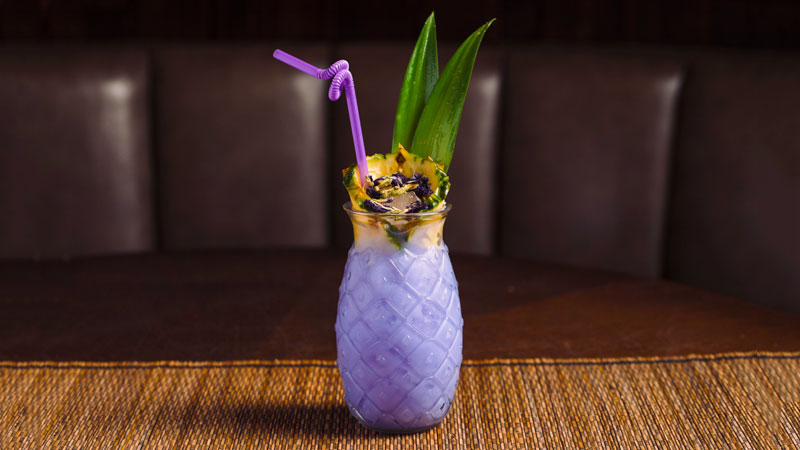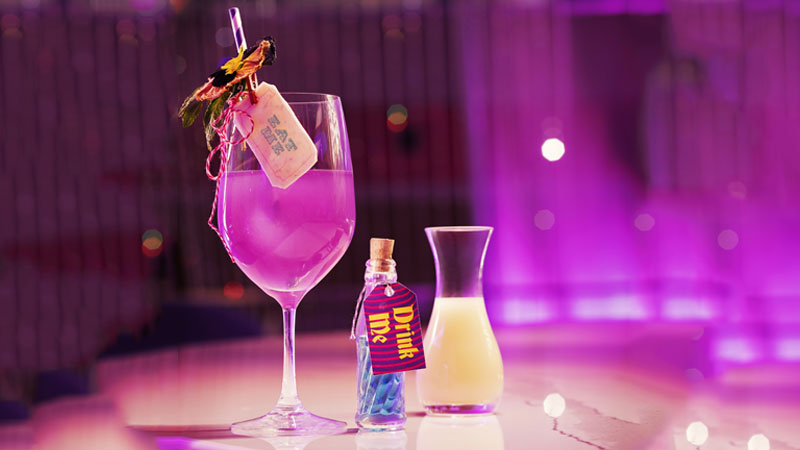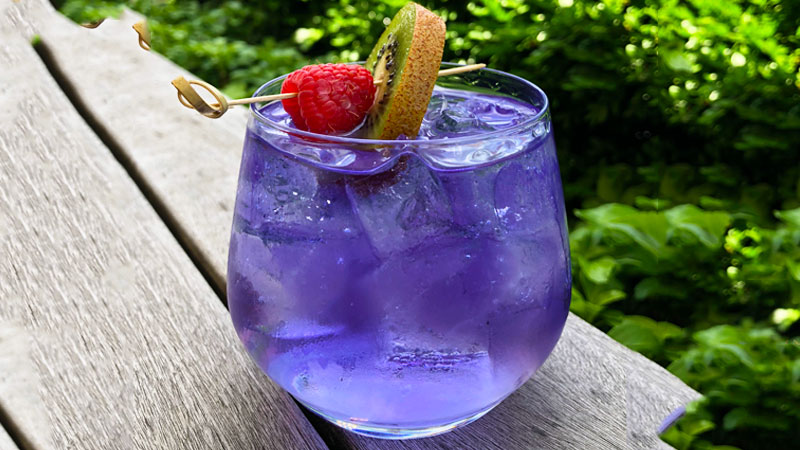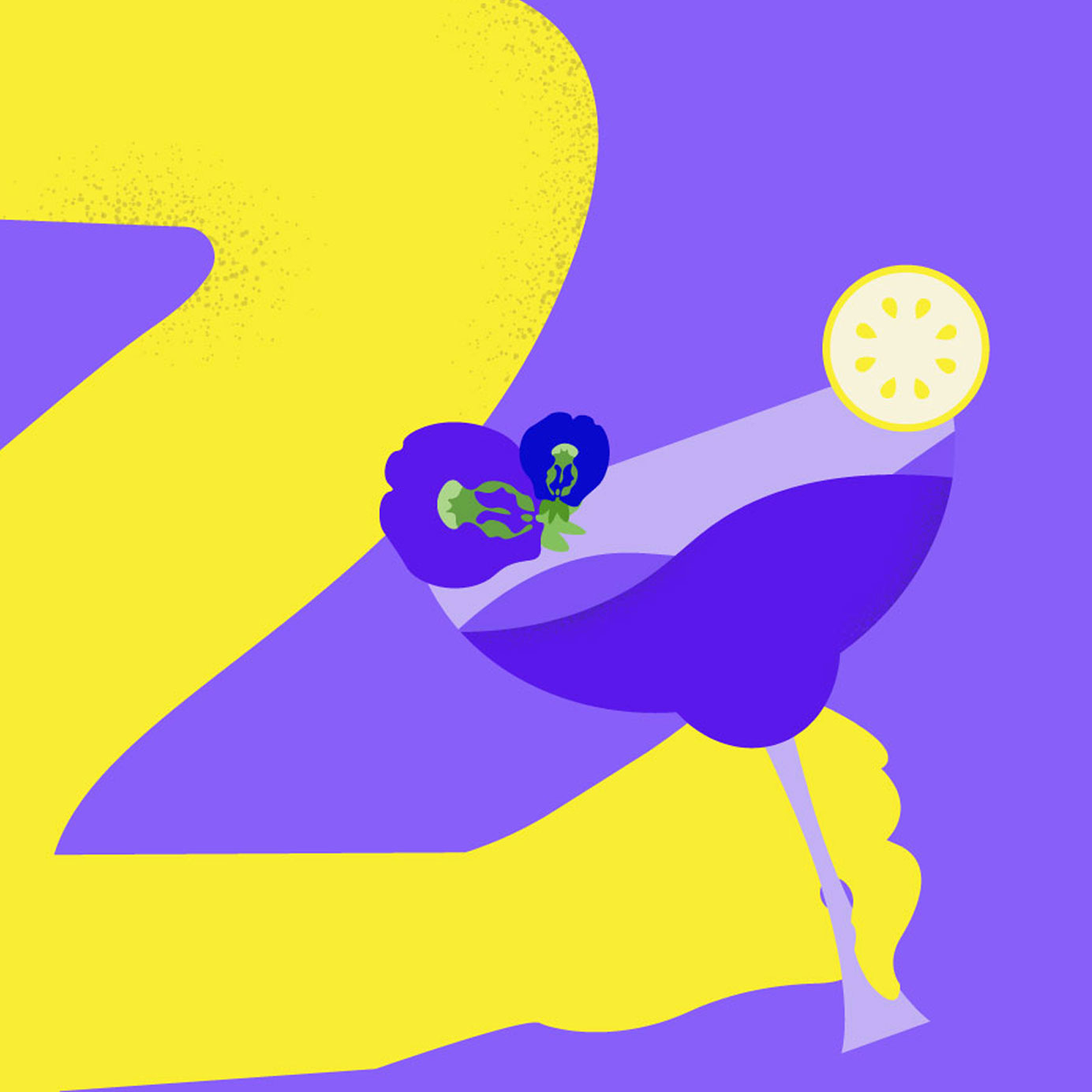In an era rife with rainbow bagels and unicorn foods, “butterfly pea flower” sounds like a made-up ingredient. It is, however, a very real plant that hails from equatorial Thailand and Malaysia.
In nature butterfly pea flowers are royal blue, like a Mets cap or the opening credits to “The Simpsons.” They’re used in teas or tinctures to naturally dye foods, and have what The New York Times calls “mood ring” capabilities.
Squeeze a dropper of butterfly pea flower tea into a glass of clear liquid and it dramatically turns blue. Add an acid, such as lime juice, and voila: Your drink changes from blue to purple. If you add high-pH ingredients, such as green tea, it becomes pink.

A wildly photogenic, all-natural ingredient satisfies most contemporary cravings, so it comes as no surprise that butterfly pea flowers are winging their way into the arsenals of cutting-edge mixologists like Kevin Beary. At Chicago tiki den Three Dots and a Dash, Beary riffs on a 1960s cocktail with his Vicious Virgin, a blend of mezcal, tequila, mango brandy, lime, orgeat, and butterfly pea tea.
“It is a good alternative to artificially colored liqueurs and cordials,” Beary writes in a message. “It’s easy, and has an interesting, earthy flavor.”
A butterfly pea flower-infused cocktail became so popular at Charleston’s 492 restaurant that bar manager Megan Deschaine reportedly tired of making it. Butterfly pea flower also makes an appearance in the easy-drinking Purple Rain cocktail at Manhattan’s Quality Eats, featuring St. Germain, crème de pêche, butterfly pea flower, and lime.
Joshua Holliday, beverage director of Swine Southern Table & Bar in Coral Gables, Fla., infuses Wheatley vodka with butterfly pea flower and mixes it with yuzu, red grapes, tarragon, bitters, and housemade lavender soda. The drink “changes color as you mix it together,” Holliday says.
Those feeling slightly less crafty can purchase spirits already infused with butterfly pea flower. Last summer Canada’s Victoria Distillers launched its butterfly pea-infused gin, Empress 1908, in the United States.
Empress 1908 is used alongside St. Germain, lemon juice, and rosewater in We’re All Mad Here, the signature drink of the sprawling Chandelier Bar. It’s also offered at NYC’s Bowery Hotel, in a drink called the Butterfly Vesper made with Zirkova Together vodka, Empress 1908, Lillet Blanc, and orange essence

“The all-natural, vibrant violet-blue color of butterfly pea flower is irresistible to bartenders and imbibers from an aesthetic sense,” Tarajia Morrell, director of culinary marketing and communications at Zirkova One + Together Vodka, says.
“If a cocktail is visually engaging, it’s more than likely the thing that a guest will want to drink,” Joshua Anthony Campbell, a brand ambassador and former NYC bartender at Leyenda and Pouring Ribbons, tells Liquor.com.
After contemplating barrel-aged Old Fashioneds and the correct balance of a properly made Negroni for the better part of two decades, cocktailers are eager to have fun. Bananas recently made a resurgence, as did tiki. “Nobody feels compelled to take a purple cocktail too seriously — which is exactly the point,” writes Chris Crowley in New York Magazine.
Morrell thinks the appeal of these butterfly pea flower drinks surpasses looks, though. They speak to modern consumers’ desires to avoid extraneous and artificial ingredients, even when they’re doing something as indulgent as ordering a $15 specialty cocktail at a fancy hotel bar.
The Butterfly Vesper, for example, comes by its vibrant hue honestly and uses multiple spirits and fortified wines for sweetness, “rather than adding straight sugar,” Morrell says.

The rise of butterfly pea flower cocktails is about appearances, but it’s also about ideology. We eat with our eyes first, and, because we are human, are hopelessly drawn to pretty things that seem a little magical. Butterfly pea flower allows us to indulge these (harmless!) base instincts without worrying about offending those who argue that artificial dyes are as offensive as bad tippers.
No cocktail is a health beverage. For that, drink water. But our modern era is rife with nebulously qualified wellness gurus, health halos, and conscientious consumption. Adulting in 2018 is exhausting. Sometimes you can’t help but see something cool and say, “I want that!” It’s only natural.
